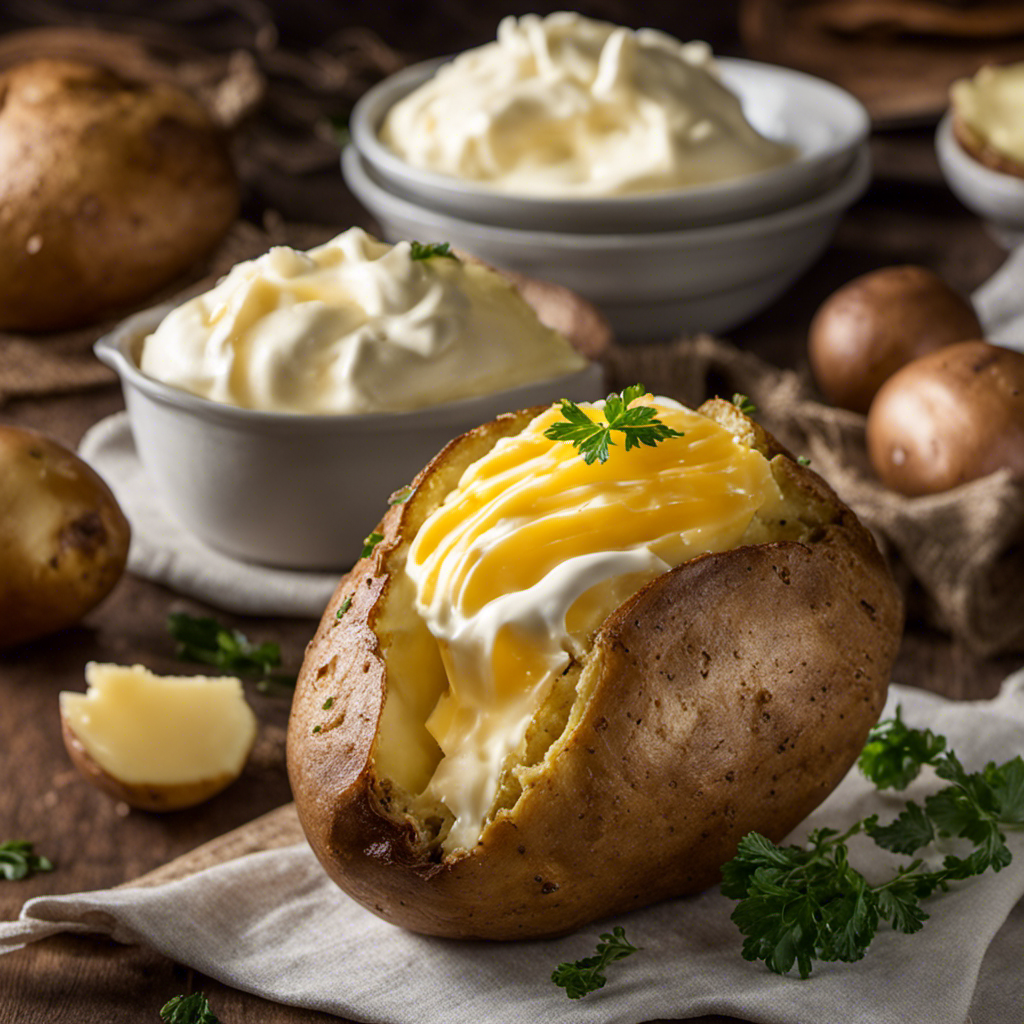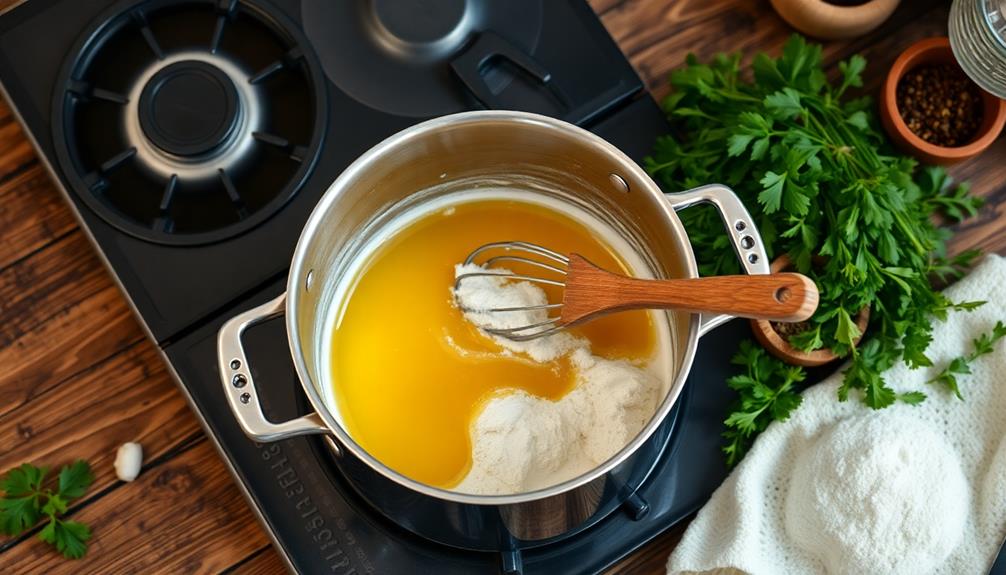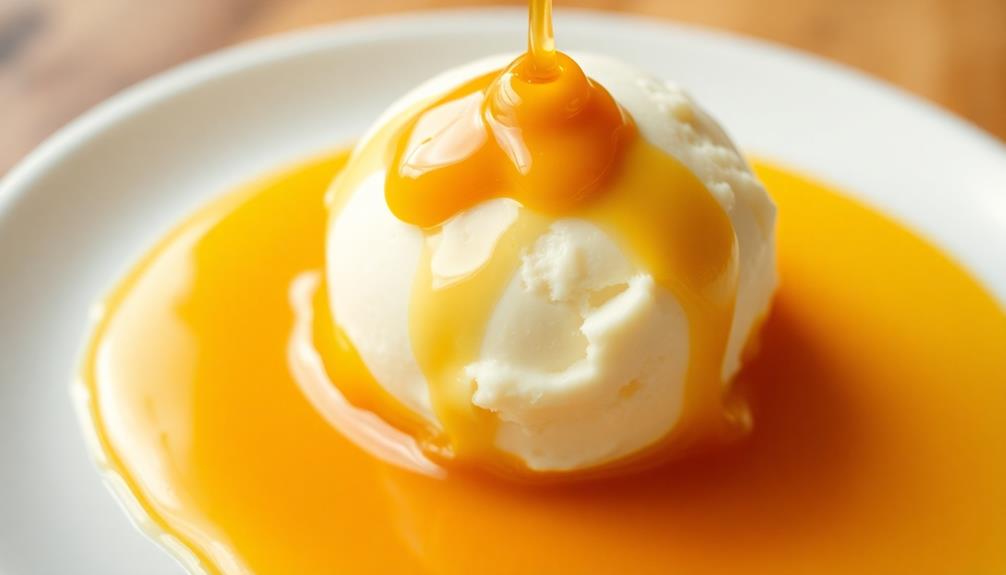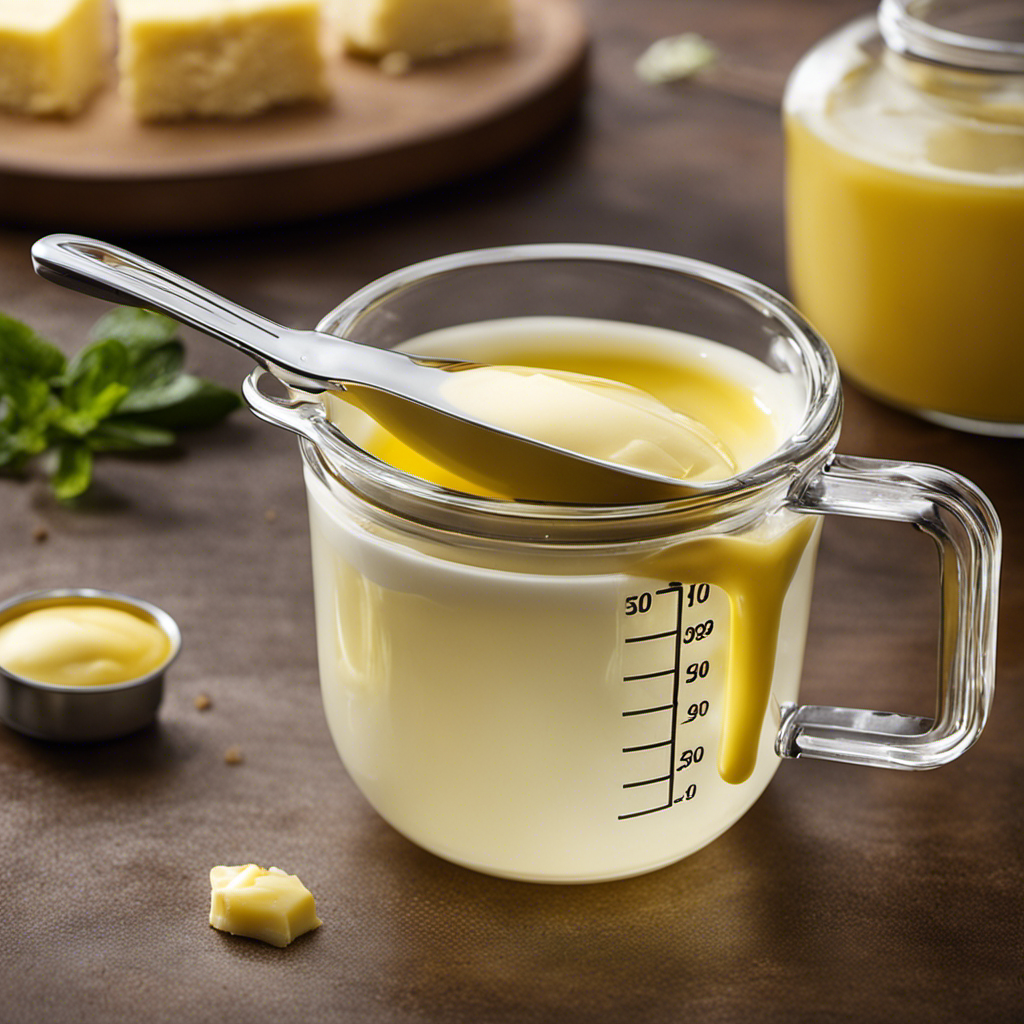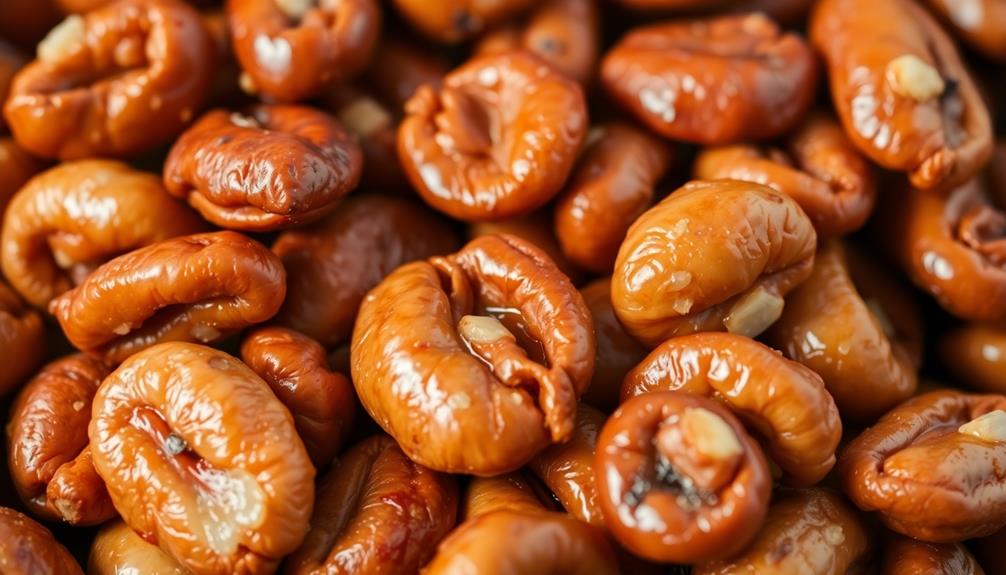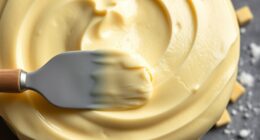Were you aware that a baked potato topped with butter and sour cream can contain an unexpectedly high calorie count? Indeed, this decadent pairing can contribute more than 400 calories to your dish.
But fear not, because in this article, we will break down the calorie content of a baked potato, explore the impact of butter, analyze the calories in sour cream toppings, and delve into the factors that influence the calorie count.
So let’s dive in and discover just how many calories are hiding in your favorite potato dish.
Key Takeaways
- A baked potato typically contains around 168 calories.
- Greek yogurt and cottage cheese can be used as healthier alternatives to butter and sour cream toppings.
- Olive oil and avocado can be considered as healthier alternatives to butter for a baked potato.
- Regular sour cream contains around 50 calories per tablespoon, while Greek yogurt and cottage cheese are lower in calories, with approximately 20 calories per tablespoon.
Calorie Breakdown of a Baked Potato
You’ll be interested to know that a baked potato typically contains around 168 calories.
Baked potatoes are not only delicious but also have several nutritional benefits. They are a good source of vitamin C, potassium, and fiber.
Vitamin C helps boost your immune system, while potassium supports healthy heart function. The fiber in baked potatoes aids in digestion and can help you feel fuller for longer.
If you’re looking for healthier alternatives to butter and sour cream toppings, you can try using Greek yogurt or cottage cheese. These options provide a creamy texture without adding excessive calories.
Now, let’s explore the impact of butter on the calorie content of a baked potato.
The Impact of Butter on Calorie Content
It’s important to consider the impact of adding butter on the total calorie content of your baked potato with sour cream. While butter may add flavor and richness to your potato, it also adds calories. Here are three things to keep in mind when choosing butter alternatives for your baked potato:
-
Opt for olive oil: Olive oil is a healthier alternative to butter as it contains monounsaturated fats, which are beneficial for heart health. It also adds a delightful taste to your potato.
-
Try avocado: Avocado is a nutritious option that provides healthy fats and a creamy texture. Mash it up and spread it on your baked potato for a delicious and nutritious twist.
-
Consider plain Greek yogurt: Greek yogurt is low in calories and high in protein. It can be a great substitute for butter, adding creaminess and tanginess to your potato.
By choosing these butter alternatives, you can still enjoy a flavorful baked potato while reaping the health benefits of potatoes.
Now, let’s move on to analyzing the calories in sour cream toppings.
Analyzing the Calories in Sour Cream Toppings
When considering your options for toppings, don’t forget to take into account the calorie content of various sour cream alternatives.
While sour cream is a popular choice for baked potatoes, it can add a significant amount of calories. Regular sour cream contains around 50 calories per tablespoon.
However, there are alternative low-calorie toppings that can still provide a creamy and flavorful addition to your baked potato. Greek yogurt is one such option, with only 20 calories per tablespoon. Another alternative is light sour cream, which has around 30 calories per tablespoon.
Additionally, cottage cheese can be a nutritious and low-calorie option, with approximately 20 calories per tablespoon.
Factors That Influence Calorie Count in Baked Potatoes
Consider the cooking method and additional toppings you choose, as these factors can greatly influence the calorie count of your baked potato.
Here are three factors that can impact the nutritional value of your baked potato:
-
Cooking methods: The way you cook your potato can affect its calorie count. Baking or steaming your potato without any added fats or oils will result in a lower calorie content compared to frying or microwaving with butter or oil.
-
Toppings: Adding butter, sour cream, cheese, or bacon bits to your baked potato can significantly increase its calorie count. These toppings are high in fats and can add extra calories to an otherwise healthy potato.
-
Portion size: The size of your baked potato can also influence its calorie content. Larger potatoes will naturally contain more calories compared to smaller ones.
To enjoy a lower-calorie baked potato, consider using cooking methods like baking or steaming, and opt for healthier toppings such as Greek yogurt or salsa instead of high-fat options like butter and sour cream.
Comparing Calorie Content of Different Baked Potato Toppings
Using healthier toppings like Greek yogurt or salsa instead of high-fat options like butter and sour cream can significantly reduce the calorie content of your baked potato. When comparing the calorie content of different toppings, it’s important to consider the nutritional value they provide.
Greek yogurt is a great alternative, as it is low in calories and high in protein. A tablespoon of Greek yogurt contains only about 15 calories, while providing essential nutrients like calcium and probiotics.
Salsa is another healthy option, as it is low in calories and packed with flavor. A quarter-cup of salsa contains approximately 20 calories and is rich in vitamins and antioxidants.
Conclusion
In conclusion, when it comes to indulging in a baked potato with butter and sour cream, it’s important to be mindful of the calorie content. A typical baked potato without any toppings contains about 130 calories. Adding a tablespoon of butter can add around 100 calories, while a dollop of sour cream can contribute an additional 30 calories. It’s worth noting that these numbers can vary depending on the size of the potato and the amount of toppings used.
If you’re watching your calorie intake, it may be helpful to consider healthier alternatives or enjoy this delicious treat in moderation. Remember, a moment on the lips, forever on the hips!
